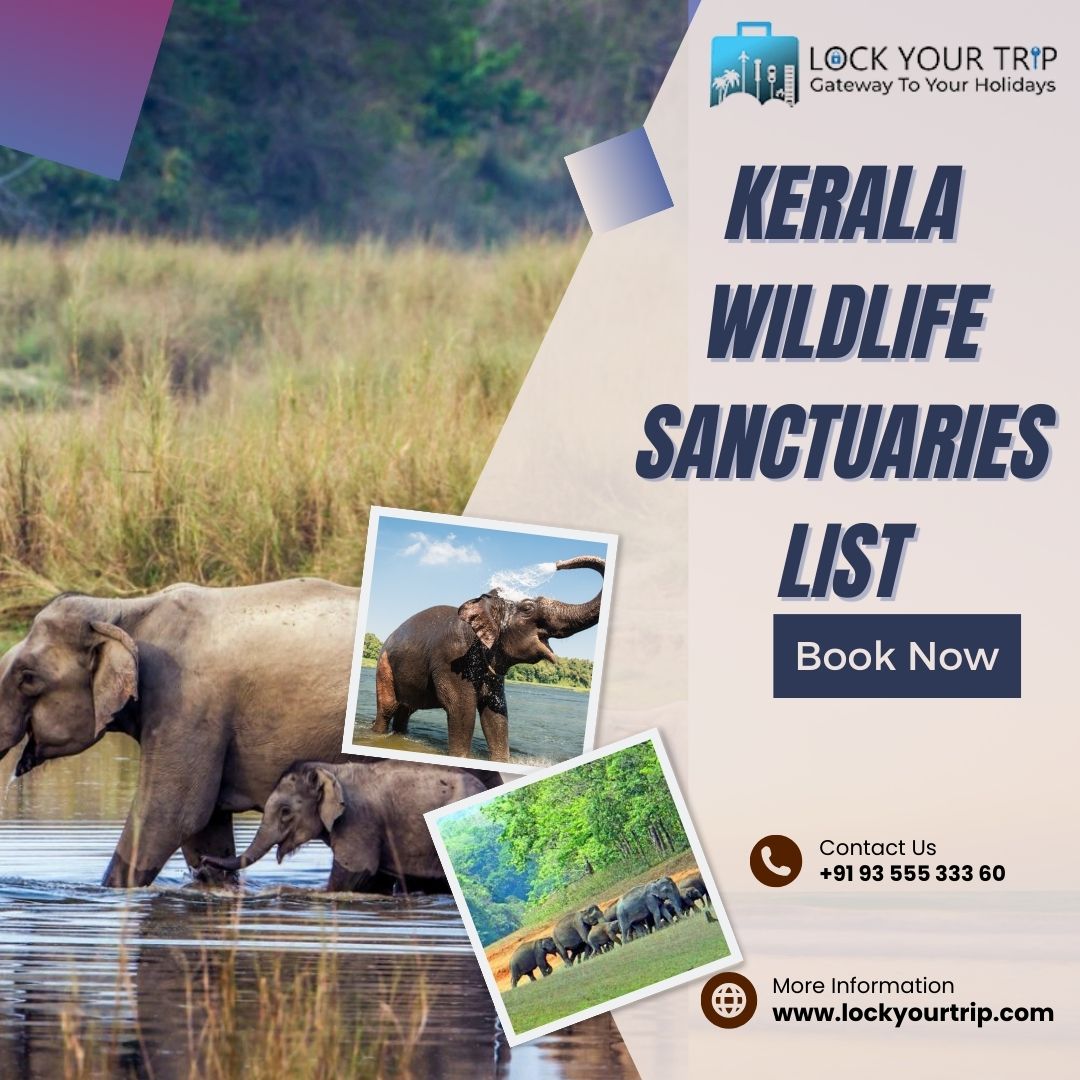A Comprehensive Guide to Kerala’s Wildlife Sanctuaries

Kerala, often referred to as “God’s Own Country,” is renowned for its breathtaking landscapes, lush greenery, and diverse ecosystems. One of the jewels in Kerala’s ecological crown is its impressive array of wildlife sanctuaries. Kerala Wildlife Sanctuaries list not only showcases the state’s commitment to conservation but also provides a haven for a wide variety of flora and fauna.
In this blog post, we will embark on a journey through the enchanting Kerala Wildlife Sanctuaries, exploring their unique features, the rich biodiversity they harbor, and the conservation efforts that make them invaluable.
Kerala, the “Land of God,” is not just renowned for its stunning backwaters, emerald hill stations, and palm-fringed beaches. It is also home to a rich tapestry of wildlife, much of which is protected within a network of well-managed wildlife sanctuaries. These sanctuaries provide a haven for endangered species, preserve precious ecosystems, and offer opportunities for wildlife enthusiasts to experience the thrill of encountering wild animals in their natural habitat.
A Glimpse into Kerala Wildlife Sanctuaries list
Kerala boasts 18 wildlife sanctuaries, each with its unique character and charm. From the lush rainforests of Wayanad to the mangrove forests of Periyar, these sanctuaries offer a diverse range of habitats for a variety of flora and fauna. Some of the most popular sanctuaries include:
- Periyar Wildlife Sanctuary
This 915 sq km sanctuary is home to a thriving tiger population, along with elephants, gaur, sambar deer, and a variety of birds. Visitors can enjoy boat safaris on Periyar Lake, where they might catch a glimpse of these majestic animals.
- Wayanad Wildlife Sanctuary
This 673 sq km sanctuary is a trekker’s paradise, with its rolling hills, dense forests, and cascading waterfalls. The sanctuary is home to tigers, elephants, langurs, and a variety of birds, including the Malabar hornbill.
- Silent Wildlife Sanctuary
Silent Valley, aptly named for its serene atmosphere, is a haven for biodiversity in the Palakkad district. This national park is a treasure trove of rare and endemic species, such as the lion-tailed macaque and the Nilgiri langur. The lush evergreen forests and pristine river systems make Silent Valley a crucial conservation area and an ideal destination for eco-tourism.
- Chimmony Wildlife Sanctuary
This 550 sq km sanctuary is known for its dense evergreen forests, which provide habitat for a variety of animals, including the Nilgiri tahr, lion-tailed macaque, and Indian sloth bear. The sanctuary is also a birdwatcher’s paradise, with over 250 species recorded.
- Thekkady Wildlife Sanctuary
This 775 sq km sanctuary is part of the Periyar Tiger Reserve and is home to a variety of animals, including tigers, elephants, gaur, and sambar deer. Visitors can enjoy jeep safaris, boat safaris, and trekking within the sanctuary.
- Munnar Wildlife Sanctuary
This 950 sq km sanctuary is located in the Western Ghats and has rolling hills, lush grasslands, and shola forests. The sanctuary is home to a variety of animals, including the Nilgiri tahr, Asian elephant, and Indian muntjac.
- Parambikulam Wildlife Sanctuary
Located in the Palakkad district, the Parambikulam Wildlife Sanctuary stands out for its unique reservoir and the Anamalai Tiger Reserve. The sanctuary is home to a variety of fauna, including the endangered grizzled giant squirrel. The impressive teak plantations and the reservoir add an interesting dimension to the sanctuary, making it a delightful destination for wildlife enthusiasts and adventure seekers.
- Idukki Wildlife Sanctuary
A haven for a variety of habitats, including tropical evergreen and deciduous woods, this sanctuary is tucked away in the high hills of Idukki. The sanctuary is a habitat for numerous bird species, making it a paradise for birdwatchers. The breathtaking landscapes and the majestic Idukki Dam in the backdrop add to the allure of this sanctuary.
Experiencing the Wild in Kerala
There are many ways to experience the wildlife of Kerala Wildlife Sanctuaries list. Jeep safaris, boat safaris, and trekking are popular options, offering opportunities to see animals in their natural habitat. Wildlife photography enthusiasts can capture stunning images of the diverse flora and fauna. Birdwatchers can enjoy the rich avian diversity, with many sanctuaries home to a variety of endemic and migratory species.
Beyond the Sanctuaries
The wildlife of Kerala exists outside of its sanctuaries as well. National parks like Eravikulam National Park and Kudremukh National Park offer additional opportunities to see wildlife. Elephant sanctuaries like Thekkady and Wayanad provide a chance to interact with these gentle giants. And even in Kerala’s towns and cities, one can spot birds, monkeys, and other small animals.
Conservation Efforts
Kerala has a long tradition of preserving its natural heritage and is dedicated to the conservation of its wildlife. The state has a strong network of protected areas, and a dedicated forest department works to conserve wildlife and habitat. Local communities also play an important role in conservation efforts, working with the government and NGOs to protect wildlife and their habitats.
Here are some additional tips for planning your wildlife trip to Kerala:
The best time to visit Kerala for wildlife viewing is from October to March when the weather is dry and sunny.
Book your accommodation and safaris in advance, especially during peak season.
Dress in comfortable clothing and shoes suitable for walking or trekking.
Be respectful of the wildlife and their habitat. Do not litter or make noise, and avoid disturbing the animals.
Support local conservation efforts by buying local handicrafts or donating to a wildlife conservation organization.
A Call to Action
The wildlife of Kerala is a precious treasure that should be protected for our future generations. By visiting Kerala’s wildlife sanctuaries, we can support conservation efforts and help ensure that these magnificent animals continue to thrive in the wild. So, pack your bags, grab your binoculars, and head to Kerala to experience the magic of its wildlife!






